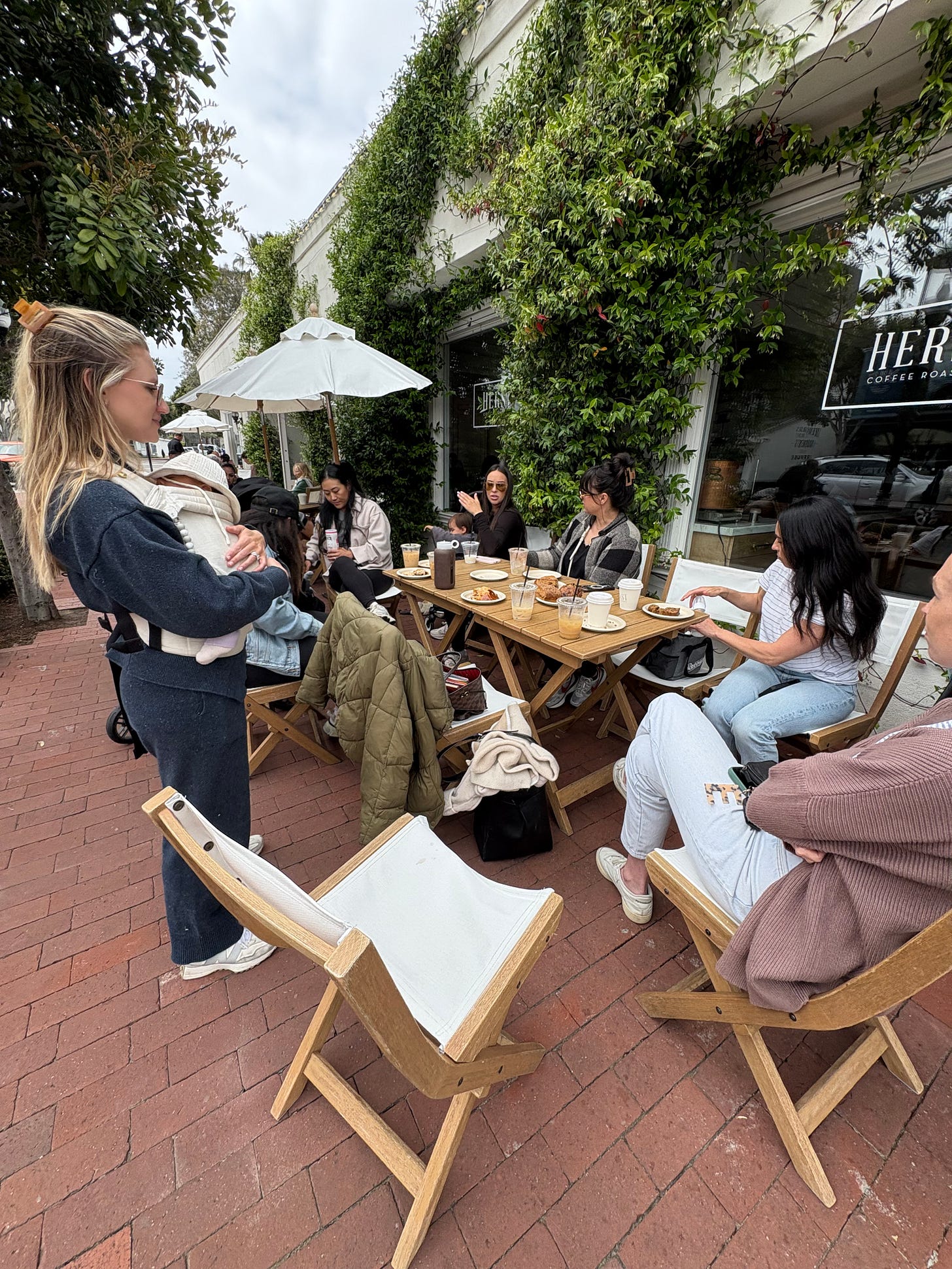Last week, I had the opportunity to speak on the topic of travel after kids at a meet up for Latch & Lattes. If you’re in OC and looking for lactation support, I recommend reaching out to Maryrose, who hosted the event!
As new (or even second- or third-time) parents, navigating the logistics of traveling post-kids presents some very real challenges. And yet, those early trips shape lasting family memories.
Here are a few of the commonly asked questions I answered at the event, drawn from taking 36 flights, visiting 3 foreign countries + many states over the course of the past three years — all from a deep love of travel after kids.
Travel with Baby FAQs (3 Years & Under)
Q: How long does a baby’s passport last?
A: Passports for children under 16 expire after five years, compared to ten years for adults.
I've heard some stories of families running into issues when their child's passport photo no longer resembles them, particularly toward the end of that five year window. If we had an international trip planned and were approaching expiration, I’d probably renew beforehand as my girls’ passport photos were taken before they turned one.
On a related note: if you have TSA PreCheck, your baby can come through the line with you. But if you have Global Entry, your child cannot automatically join you; they will need their own membership which includes a separate application and interview. (For babies, the “interview” is really just a quick photo and identity verification.)
The good news: Global Entry for kids is now free (versus $120 for adults every five years). But you do still have to go through the full process individually for each child.
Q: Should I get a Slumberpod?
A: Yes, and the earlier you introduce it, the better.
I am a Slumberpod evangelist. It has been essential for room sharing on many trips with my kids. We started using it when my older daughter was four months old and continued until around age two and a half, when she began insisting we “leave it open a little bit!” which mostly defeated the purpose. Now I have transitioned to using it while traveling with our newborn’s Guava Lotus travel bassinet and our three year old sleeps in the Slumberpod inflatable toddler bed.
This said, I have heard of parents introducing the blackout tent once their child is already a toddler, only to find that it is quickly rejected as the setup feels too unfamiliar. So, early introduction is key.
Q: I’m worried about the baby crying on the plane. Do you have any tips?
A: My first piece of advice, which I offer after countless experiences as those people with the crying baby on the plane, is to accept that your baby is going to cry. And know that you’ll be the one most upset about it. Try to tune out your concern for other passengers; I promise, their biological reaction to your child’s cries is nowhere near as intense as yours. Babies cry, and they cry on planes, too.
My second piece of advice is to play to your child’s strengths. Some kids will sleep easily on night flights, mine did not. Some nap soundly in their car seats, others do better in their carrier. In the early days of traveling with our first baby, after two nightmarish flights during bedtime that ended up full of tears and devoid of sleep, we stopped booking flights that conflicted with bedtime whenever possible and opted for daytime flights instead.
Try to recreate your home sleep environment on the plane: bring the sleep sack, the lovey, the white noise machine. Stick to familiar wake windows and feeding times to the extent you can. Beyond that, let the trip unfold. Attempting to fully control the situation will almost always backfire as I’ve learned the hard way.
(For more flight tips, read: Sixteen Takeaways from Our First Sixteen Flights with an Infant.)
Q: Should I buy my infant a seat on the plane?
A: My rule of thumb: buy a seat when your baby is mobile and the flight is longer than four hours.
The one to two year age range is commonly known as the most challenging for travel. I concur with this, although we have completed many successful flights at this stage - even up to 12 hours of airtime. I have now come to appreciate how much easier it feels to travel with a younger baby (under one year) and older toddler (over two) after doing those trips in the early mobility / early language development phase.
Between ages one to two, they want to move constantly and don’t yet have the language to understand when they need to stay put. For that reason, having a car seat on board creates a safe place to buckle them in. If you are traveling with another adult, you’ll have two laps and a bit more flexibility - but once your child is mobile, I have found having their own seat to be worth it on longer flights.
A reminder: children under two fly free as lap infants on domestic flights, and for 10% of the ticket price internationally. Even so, once they are about a year old (or when facing a long flight time), I generally consider the cost of an extra seat a worthwhile investment in everyone’s sanity.
Other Qs? Leave them in the comments!
Thank you for reading! If you know a parent who loves travel (or wants to), would you be kind enough to send Carry On their way?
x Amanda
p.s. you can always see all posts on the website





